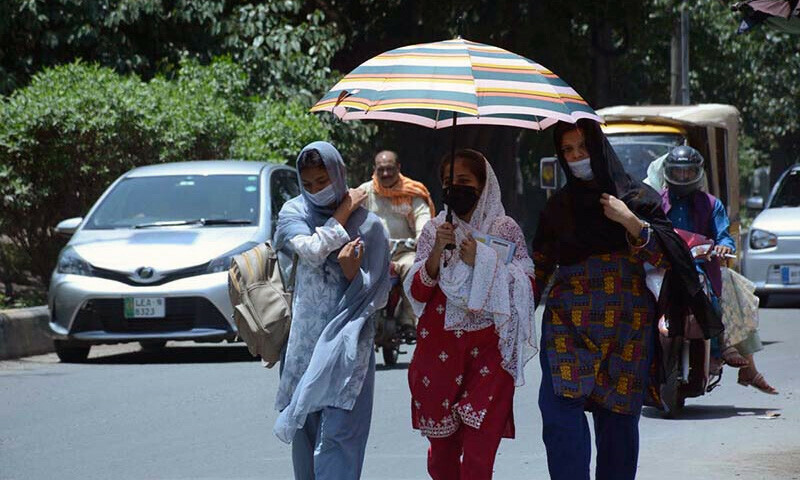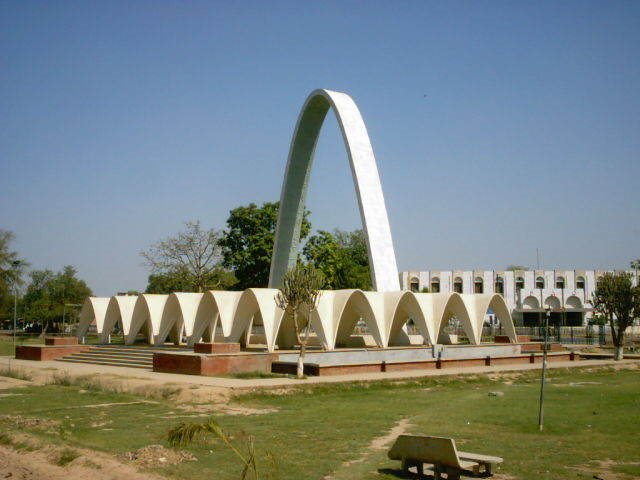Sahiwal is a city in the heart of Punjab, Pakistan. Known for its agriculture, Sahiwal experiences a range of weather conditions throughout the year. From blazing summers to chilly winters, the city’s weather plays an important role in daily life, farming, and public health.
This article provides a detailed overview of the weather in Sahiwal. It is divided into months and seasons. It also explains the challenges residents face and how they can stay safe during extreme conditions.
Geographic Location of Sahiwal
Sahiwal is located between Lahore and Multan. It lies in the central region of Punjab. The city is part of a flat plain with fertile soil. This location has a direct impact on its weather patterns.
Climate Type of Sahiwal
Sahiwal has a semi-arid climate. This means the area has hot summers and mild to cold winters. Rainfall is limited but occurs mainly in the monsoon season. The air is dry most of the year. The climate is ideal for growing wheat, cotton, sugarcane, and vegetables.
Seasonal Overview
The year in Sahiwal can be divided into four main seasons:
- Summer (May to August)
- Monsoon (Late June to September)
- Winter (December to February)
- Spring and Autumn (March-April and October-November)
Summer Season in Sahiwal
May to August

Summer in Sahiwal is intense. The temperature regularly crosses 40°C. In June, it can go up to 45°C or more. The days are long and dry. Heatwaves are common. People avoid going outside during midday.
Health Hazards in Summer
- Heatstroke
- Dehydration
- Skin issues
- Eye irritation
How People Cope
- Staying indoors during peak hours (11 AM to 4 PM)
- Using air coolers or fans
- Drinking cold water and juices
- Wearing cotton clothes
Monsoon Season in Sahiwal
Late June to September
The monsoon brings some relief from the heat. Rainfall begins in late June and continues till September. Average rainfall is around 300 to 500 mm annually. The rain is important for crops and water reservoirs.
Challenges During Monsoon
- Urban flooding in low-lying areas
- Poor drainage systems
- Mosquito breeding (leading to dengue and malaria)
- Traffic problems due to water-logging
Precautions During Monsoon
- Clean roof drains regularly
- Use mosquito nets
- Stay indoors during thunderstorms
- Avoid walking through floodwater
Winter Season in Sahiwal
December to February
Winter in Sahiwal is dry and cool. The temperature ranges from 5°C to 20°C. In January, it may drop below 5°C at night. Fog is very common. It affects visibility on roads and disrupts air and train services.
Winter Clothing
- Woolen sweaters
- Jackets
- Gloves and caps
- Warm bedding
Public Advice During Winter
- Drive slowly in fog
- Use heaters safely
- Drink warm liquids
- Take care of infants and elderly
Spring and Autumn in Sahiwal
March to April (Spring)
Spring is pleasant. Flowers bloom. Temperatures stay between 18°C and 30°C. Farmers prepare for wheat harvesting.
October to November (Autumn)
Autumn is dry and windy. The sky stays clear. Farmers sow wheat and vegetables during this time. Temperature ranges from 15°C to 30°C.
Monthly Weather Breakdown
January
- Coldest month
- Minimum temperature: 3°C
- Fog covers mornings
- Dry weather
February
- End of winter
- Slightly warmer
- Flowers start to bloom
March
- Spring begins
- Pleasant weather
- Farmers get busy in fields
April
Warm afternoons
Cool evenings
Start of summer crops
May
Hot weather begins
Sunlight gets intense
Heatwave warnings issued
June
Extremely hot
Peak of summer
Some early monsoon showers
July
Rainy days
Thunderstorms
Better air quality
August
Humid and wet
Frequent rain spells
Waterlogging in some areas
September
End of monsoon
Less rain
Temperature begins to drop
October
Cool breeze
Clear skies
Perfect weather for outings
November
Autumn in full swing
Dry air
Night temperatures drop
December
- Cold weather
- Dry and foggy
- Start of winter vegetables
Climate Change Impact in Sahiwal
The effects of climate change are visible in Sahiwal too.
- Summers are getting hotter.
- Rain patterns are changing.
- Winters are becoming shorter.
- Extreme weather events are more frequent.
Farmers face uncertainty in crop planning. The local government is advised to adopt climate-resilient farming techniques.
Recent Weather Trends (2023–2025)
- In 2023, Sahiwal recorded its hottest June at 47°C.
- 2024 brought unexpected rain in March, damaging wheat crops.
- In early 2025, fog levels in January reduced visibility to 25 meters.
These changes have prompted the district administration to stay alert.
Government Response and Alerts
The Pakistan Meteorological Department (PMD) provides daily weather updates. In case of heatwaves or rainstorms, alerts are shared via:
- SMS
- TV news
- Social media
- FM radio channels
The District Disaster Management Authority (DDMA) also plays a key role in weather-related emergencies.
Farming and Weather in Sahiwal
Sahiwal is an agricultural city. Crops like wheat, cotton, and sugarcane depend on weather.
Weather Effects on Farming:
- Wheat needs cold nights.
- Cotton requires dry summer.
- Rain helps sugarcane grow.
- Storms can destroy standing crops.
Farmers now use mobile apps for weather forecasts. This helps them plan irrigation and harvesting.
Air Quality and Weather
Air quality in Sahiwal is usually good. However, in winter, smog levels increase due to:
- Crop burning
- Factory smoke
- Traffic pollution
During smog, the air becomes unhealthy. People with asthma and heart problems are advised to stay indoors.
Tips for Residents
- Drink 8–10 glasses of water daily in summer.
- Wear sunscreen when outdoors.
- Avoid outdoor activity in smoggy mornings.
- Keep emergency numbers handy during storms.
- Prepare winter clothing in advance.
Conclusion
The weather in Sahiwal, Punjab, plays a vital role in the daily lives of its residents. From the scorching heat of June to the chilly mornings of January, each season brings unique challenges and opportunities.
Staying updated with weather forecasts, taking proper precautions, and understanding the changing climate are important steps for both individuals and policymakers.
For accurate and timely weather updates in Sahiwal, stay connected with City40News – your trusted source for local weather, news, and alerts.


